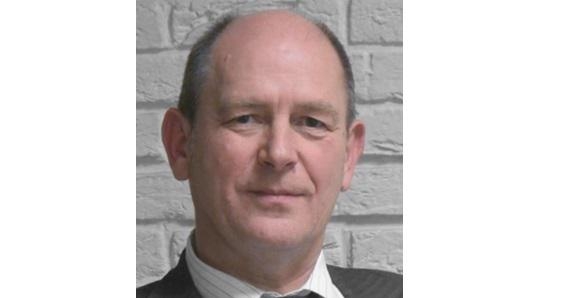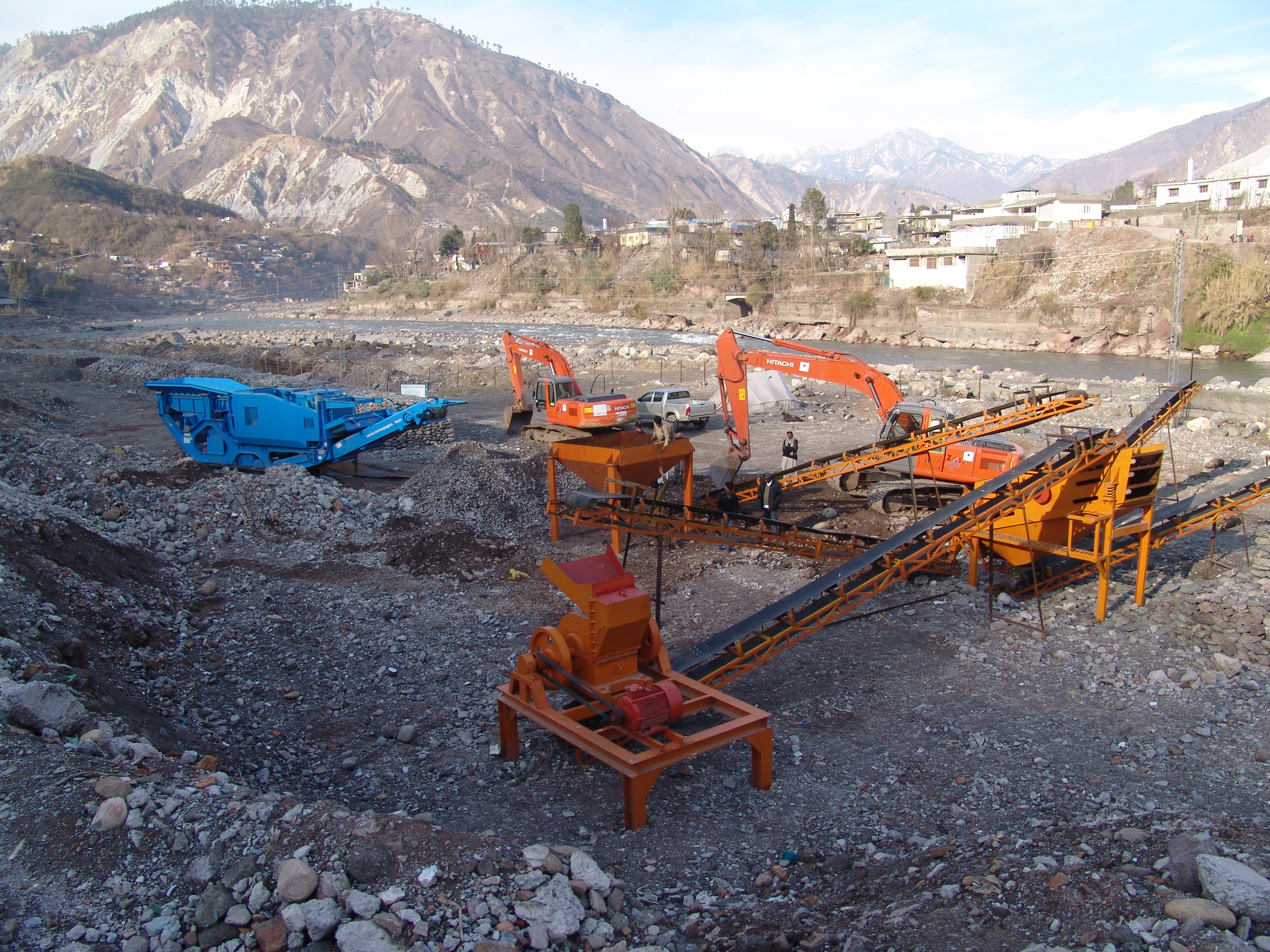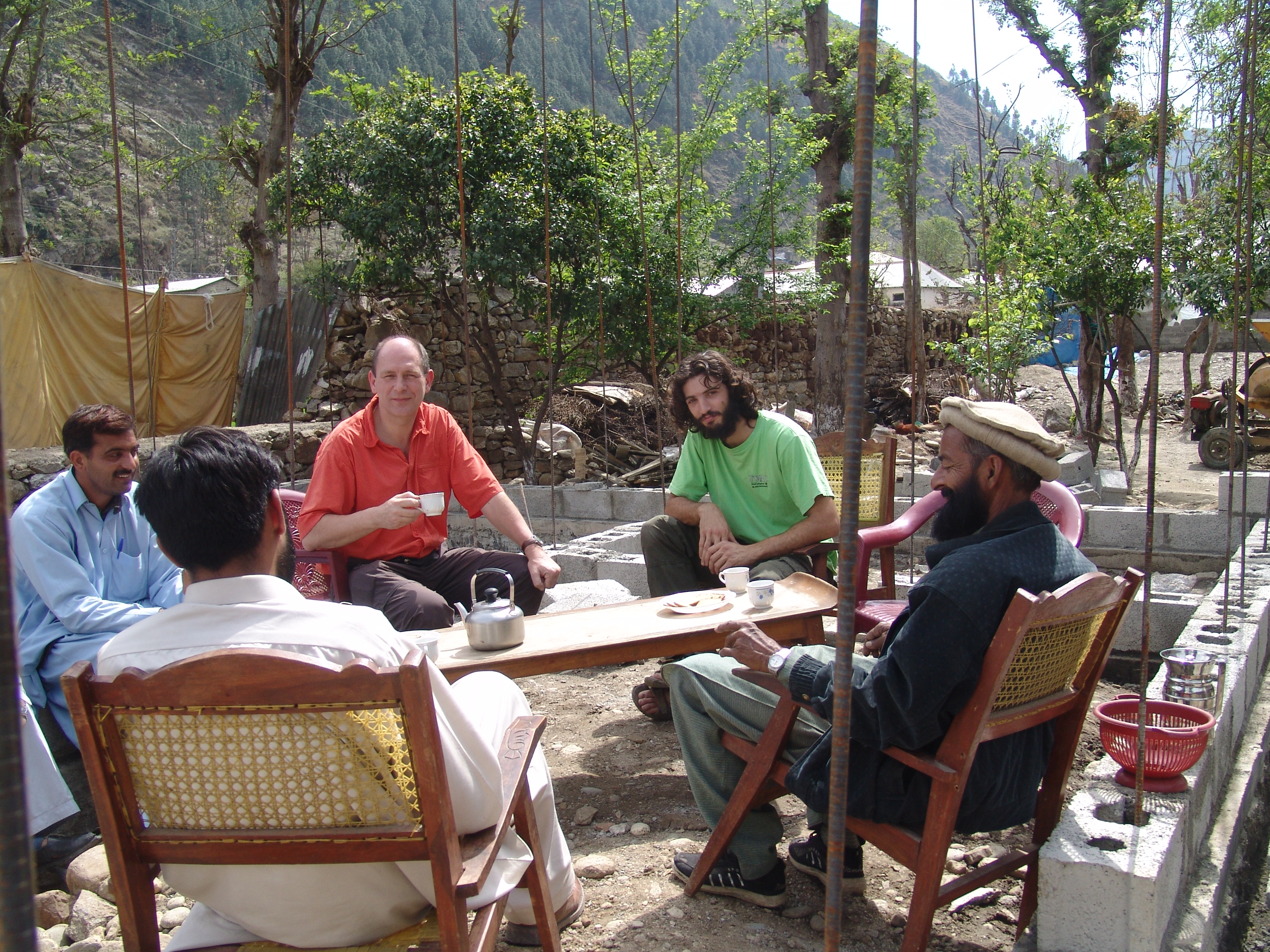News

Interview with RILEM Out-going President (2018-2021), Johan Vyncke
Johan Vyncke is the Director of Strategy & Innovation at the Belgian Building Research Institute – BBRI. He became RILEM Vice-President in 2012, then President in 2015 and Out-going President in 2018. He will finish his 9-year mandate in September 2021.
RIM: Good morning Johan! How are you today and how are things?
Johan: Well… I am not so well prepared for this. I have to confess I didn’t take enough time to reflect on what to say today.
We both laughed. I thought to start posing some questions to break the ice but Johan had already in mind what to say!
Johan: I think I said this before, but I will repeat it here: it is a good time for people involved with RILEM as things are running fluidly without much disruption. There are lots of motivations and ideas. The General Secretariat team is running very well. The interaction between Judith (editor’s note: Mrs. Judith Hardy – RILEM General Secretary), Anne (editor’s note: Mrs. Anne Griffoin – Head of Communication and Publications), Fanta (editor’s note: Mrs. Fanta Sylla – Management Assistant) and yourself is going very well. The only negative aspect at present is the burden of this COVID situation. The question is “how will we start this up again?”. I can imagine that at the beginning it will be hard to get the spirit where people dare to go to places. I think about Mexico (editor’s note: the 75th RIELM Annual week in September 2021 is scheduled in Merida, Mexico). It is a pity to see the organisers doing the hard work to set up an event, to run a conference… and then people might not register. I am very interested, hoping and willing to go. Let’s see what happens…
RIM: I found out in the RILEM system that you have been a RILEM subscribing member since 1994. This means that within a couple of years we will be celebrating your 30 years in RILEM!!!
Johan: Yes, 1994 should be correct. I should check the year in which I started as Secretary of a Technical Committee (editor’s note: today this role is called Deputy Chair of a TC). It could have been even a little earlier than 1994. It was in a TC on recycling (editor’s note: it was TC 121-DRG “Guidance for demolition and re-use of concrete and masonry”). My Director General at BBRI had started quite some work on that topic and when I joined BBRI in 1988 it took him less than a year to ask me to join this TC as Secretary. I liked the idea very much! Within this TC, we worked on two aspects: one was recycling of rubbles and the other was the evaluation of the state of a building after an earthquake i.e., should it be demolished or repaired? We established some guidelines on how to operate. It was a TC run with Danish colleagues. At that time, we had the chance to have a TC Chair (editor’s note: Erik Lauritzen) who was an industrial person working in demolition contracting. So, when we went to Denmark for some TC meetings, he always invited us to go to a construction site where they were doing some demolition, of a chimney for instance, with explosion and other spectacular things. We also visited quite a number of recycling plants. So, when the meeting was in other countries outside Denmark, the organisers always tried to have visits to demolition sites or recycling plants. It was very interesting. It was also fun to see how the TC developed: you often need around a year to know each other and talk a lot then “ouch, we better start to work now! We have been talking enough”. Because at the beginning you spent some time to understand where you should go. I remember that at that time for all of us RILEM was just the TC, no one was much acquainted with the RILEM General Council. Then one day Erik Lauritzen told us that we had to present the work of the TC at the RILEM General Council, and we were all thinking “Uh!! Who are these big bosses there who will judge our work?”. It was another world after that in which I get involved later on. I have very nice memories of all the things that we did with RILEM in those years.
RIM: So... you approached RILEM because you were invited to join the TC?
Johan: Well… yes! I had just joined my company (BBRI) and RILEM was well known internally as BBRI was and still is a RILEM Corporate member. I had heard about RILEM also when I was a student at the university, of course. Later, after that TC, I became also a National Delegate for Belgium. In Belgium we had many RILEM members, I recall around 50 or 60, but people used to meet each other mostly abroad at RILEM events! It was and still is very difficult to have a “Belgium RILEM” spirit, as Belgium people are sometimes too “individual”. But once I joined the TC, it was a great opportunity and a fantastic experience. For the rest of my activities within RILEM, they were always related to the activities of BBRI that is less scientific and more practical, i.e. “how can we transpose this to industry practitioners”. The important thing for BBRI is to see what is happening at the international level and bring it back to Belgium. RILEM is a great platform for such activity!
RIM: Let’s talk about your 30 years in RILEM! 30 years is a long time. What has happened during this period?
Johan: So much has happened! As I mentioned before, the main difference is that as a young person when you were in RILEM you were inside a Technical Committee. Nowadays, there is also a lot of work within RILEM if you start to get involved with the Standing Committees and Bureau activities. Still for a lot of people being a RILEM member means meeting your TC and going to a conference. But there are also many more RILEM members involved in the management of RILEM compared to 30 years ago. For me, the change was triggered by Carmen Andrade who invited me to join the Bureau meeting in 1998 during the Annual Week in Melbourne, as an observer. I thought “hmm!”. I was kind of honoured she asked me. And after this meeting, all of a sudden, I was invited to be a member of Bureau. I think Carmen was still Vice President then and Jacques Bresson was the President. Since then, I have seen changes in a way that things are much more democratic. Before then, you had to be selected to be a National Representative of your country and in the General Council there were only the National Representatives to have a say about the management of RILEM and the other members didn’t have the opportunity to say much.
RIM: I understand the General Council was more like an elite of people!
Johan: I think now the organization of RILEM is much more open to people who participate into the TCs and to young members, especially with this new RILEM Youth Council. I think that what we are doing in April “in” Paris this year (editor note: the RILEM Strategic workshop) is emblematic on this regard as we are asking directly our members “hey, what do you want in RILEM?”. For me, I have always had the idea that RILEM should be an organization that serves its members, like giving exposure to our members, helping them to organise events, and also helping them with the RILEM website, their membership, etc. I think it is “normal” what you said about the elite, which happened during many years in the past. But everyone over the world is now working on the spirit of being equal peers. Even with architects, engineers… everyone has dropped down from his/her own pillar. I think it is important to send a clear message of being accessible and open!
RIM: You are a strong advocate of RILEM. You are a very active outgoing President and you have a clear vision about the future of RILEM.
Johan: I would say I have been always involved within RILEM more as a manager than a technician. Of course when I was working in the TC, we did some technical work. And I even mentioned to Carmen when I was invited to join the Bureau that I guess they should have looked at me as an outsider, to report what I did see in other sectors and how that could be implemented within RILEM. On some occasion it might have made me feel strange to recognise the technical skills that other people have within RILEM and that you do not have yourself. Do you see what I mean?
RIM: I do, but without your management skills RILEM wouldn’t be where it is now! RILEM needs both type of people, don’t you think?
Johan: Yes, yes! But it was not only my contribution. I think I mentioned this already: the current format of a 9-year mandate for a RILEM President (editor’s note: 3 years as Vice-President, 3 years as President, 3 years as Outgoing-President) is a gradual system that gives the opportunity to recognise and appreciate the work done by your predecessors. I was a bit nervous when I became Vice-President and I felt the responsibility on my shoulders.
RIM: Apologies to interrupt but… on this matter, how does it work? Do you propose yourself as a Vice-President? Are you picked?
Johan: This is a good question! In RILEM, to elect the Vice-President you do not run elections. You are asked to do it! it is not something for which you say “I want to be a RILEM President, I put down my candidature and I start my campaign”. The system works with a Recommending Committee selected from around 15 members which makes a list of potential candidates. Then the Committee approaches the candidates and ask if they are available to cover this role. In my case, I still remember a call from Doug Hooton asking me “would you be willing to stand as RILEM Vice-President?”. And you are honoured for such invitation but also a little bit afraid of the responsibility that comes with that: “will I do it in the correct way?”.
RIM: What do you think now? Are you happy with your work over the last 9 years?
Johan: I am happy with what we did. I was very happy and lucky to be spoiled by such a nice team! I was with Mark Alexander who is and was a fantastic mentor. You will never be judged by Mark. Mark will say “we should try to do that” and he will try to motivate you. Then I became president and I had Ravindra as Vice President. Ravindra is the typical guy who is known everywhere in the world.
RIM: How and where do you see yourself at the end of your mandate in September this year? And where do you see RILEM going?
Johan: I will definitively try to continue to be involved in RILEM. In Sheffield it was very strange as I didn’t expect it at all (editor’s note: Johan was elected Honorary member and received this award during the General Council meeting of the 74th RILEM Annual Week “in” Sheffield in 2020). I would like to be able to stay around to help young people involved with the institute and any other person involved with RILEM with advice. It is very motivating to work in such as nice new environment at the RILEM secretariat. I understand and I see it is something that other people experienced too at a certain stage, when you get older and retired and staying involved within the financial side of RILEM becomes more difficult. I am not referring to the membership fees but the financial implications to travel to attend a RILEM event. I also imagine that once you are over as RILEM President you continue to get involved with the management but only up to a certain level. It would not be good if it was different. You must have to take a step back and let other people do it.
RIM: RILEM could think to implement a new figure called “RILEM mentor” for retired members who have so much to share and contribute.
Johan: Yes! See what is happening now with Mark (editor’s note: Mark Alexander, RILEM President from 2012 to 2015)! It is good he is now involved with the History book for the 75th RILEM anniversary as past President. It would be nice to see all past Presidents meeting together again, like Peter Richner, Arnon Bentur, Åke Skarendahl which whom I worked a lot together and others. It is a pity that this cannot happen in Paris this year due to COVID.
RIM: Hopefully it will happen next year!
Johan: Yes sure. As far as I am concerned, at the moment I am not too much concerned of disappearing after September this year! I am still looking forward to the upcoming RILEM event in Japan in 2021 and others that are already in my diary.
RIM: What about your vision of RILEM in the future?
Johan: If I compare RILEM to other similar organizations, RILEM is one of the oldest and most stable! Other institutes have been merged or they changed or they had financial problems. This is the good foundation of RILEM: we are financially strong and we are able to implement new projects. Take for instance this new RILEM Youth Council. I am so glad this is happening! I think we still have to work on the industry relationship as we should work more on making the recommendations available to industry practitioners. RILEM is good not only at spotting innovation but also to create a good atmosphere to promote these new items and facilitate their implementation in the industry. For the future, of course, we all hope that COVID will disappear soon. I remember at the last strategic workshop 6 years ago, we run a SWOT (editor’s note: Strengths, Weaknesses, Opportunities, and Threats) and we saw this item “pandemic” and we all had the feeling it was a matter of academic completeness as it sounded like a science-movie. And now here we are! RILEM will run over this, but if we keep working in this virtual environment, we will face some challenges. It is good that we can do it and a typical great example was the event “Materials and value chains for sustainable, inclusive, and resilient urbanisation in Africa” in January this year, a full day online conference that had the ability to reach out so many people that otherwise we might have not reached. But you also feel that the next step is to meet these people, to see each other, to create this community. It is different if you only see someone on a screen. RILEM should not become the new Facebook network, where you electronically connect to people.
RIM: You are so knowledgeable about what is happening in the industry, Johan.
Johan: This is because BBRI is directly working for contractors and is part of these contractors’ network in Europe. If I look back at things that I enjoyed doing in RILEM, I see me mentoring Ravindra Gettu and Lucile Vandewalle to set up a European project on Fribre Reinforced concrete (editor’s note: Test and design methods for steel fibre reinforced concrete, Funded by the Commission of the European Communities, DG XII-BRPR, 1999-2002) that was also part of RILEM (editor’s note: RILEM TC 162-TDF “Test and design methods for steel fibre reinforced concrete”). I think that young RILEM members involved in big grant schemes, like Marie Curie for instance, should be able to carry their research to the next stage and turn things into real, in practice. To go back to my “concrete recycling adventure”, for me it was a nice, unexpected outcome when in 2006, after a big earthquake in Cashmere – Pakistan, we (editor’s note: some former RILEM TC members of TC 121-DRG “Guidance for demolition and re-use of concrete and masonry”) were contacted by the Pakistani government to give some help. So, three of us flew to Muzaffarabad in recognition of our engineering skills. We made a tour, we saw a lot of problems with the after-earthquake disaster and we wrote a report. We managed to convince the Belgium government to donate a recycling plant that was sent to Karachi. We followed this project for 5 years. For me, this was putting into practice everything we learned from the RILEM TC 121-DRG. This is definitively one of the nicest things that happened in my carrier. I still have contacts in Pakistan and I should have some pictures…
RIM: Please, send them through and thank you for this chat!

The recycling plant donated by the Belgian Government which was installed in the context of an Engineers without Borders (IZG) mission in Muzaffarabad, Pakistan. Picture courtesy of J. Vyncke

Tea time in Battagram, Pakistan, with a colleague from the Belgian Red Cross and local Pakistani colleagues. Johan Vyncke is the third from the left, wearing a red shirt. Picture courtesy of J. Vyncke














No comment
Log in to post comment. Log in.